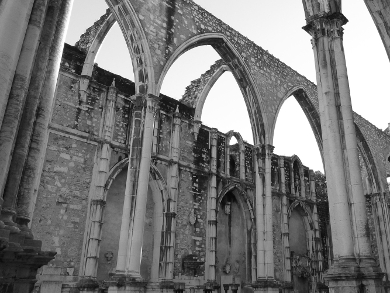Monuments are often made from carbonate-containing materials, such as marble. Exposure to pollution can change their composition and cause problems for their preservation. Acidic rain, for example, contains sulfuric acid that can convert calcium carbonate to gypsum, i.e, calcium sulfate. The resulting gypsum can absorb pollutants and turn the surface of the monuments dark over time.
Morena Nocchetti, University of Perugia, Italy, and colleagues have developed a combination of ion exchangers which can remove such gypsum crusts from stones. The team synthesized a layered double hydroxide of the form [Mg0.65Al0.35(OH)2]Cl0.35·0.6H2O using solutions of magnesium chloride, aluminum chloride, and urea. This compound acts as an anion exchanger. In addition, a semisodic form of α-zirconium phosphate, Zr(NaPO4)(HPO4)·5H2O, was prepared by combining zirconium phosphate with propylamine and a sodium chloride solution. This compound can act as a cation exchanger.
The researchers mixed the two ion exchange materials together with water to form a paste. This paste can replace sulfate with chloride and thus, dissolve gypsum. It can also prevent the reprecipitation of gypsum by replacing free calcium ions with sodium ions. The team tested the mixture on a fragment obtained from a historical sandstone wall at the University of Perugia. The paste was applied to the blackened stone, left for 75 minutes, and removed before it dried completely. This treatment was repeated. The color of the stone lightened considerably and X-ray powder diffraction (XRD) analysis showed that gypsum was removed, while MgAlSO4 was formed.
According to the researchers, the developed method is much faster than commonly used procedures and uses nontoxic and inexpensive materials. However, multiple treatments might be needed to remove thick gypsum crusts.
- Layered double hydroxide and zirconium phosphate as ion exchangers for the removal of ‘black crusts’ from the surface of ancient monuments,
E. Boccalon, M. Nocchetti, M. Pica, A. Romani, M. Casciola,
Dalton Trans. 2018.
DOI: 10.1039/c7dt03957c



